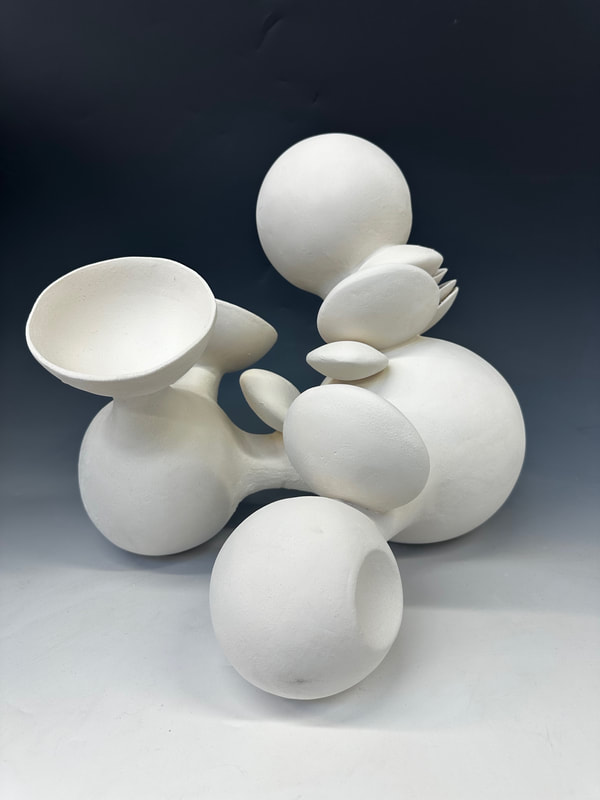|
I was still struggling with focus and decision making about the piece, I felt really unsure about what to do and was struggling with concentration (it was at this point that realised that something else may be going on).
I assembled the components of the white piece, it was challenging as lots of areas needed to be supported, I hadn't fully resolved how I was going to balance the piece and this ended up causing me issues later on. I know I should have probably drawn out a plan of how I envisaged it would look, or at least attempt to design a mock up of the components just as simple shapes and what they would look like, I know that if I had done all of that I would have doubtless made my life much easier. I just couldn't think my way through how to do this, I don't sketch out my ideas before hand, i never have. I am a poor draughtsman and have absolutely no confidence in my drawing skills, I hate showing anything I have drawn and the whole style of think & see, followed by sketching then making is just alien to me and massively re-enforces the feelings of self doubt and imposter syndrome I carry with me. In terms of the practical elements of the construction I knew that by using sponges, clay wads and kiln props I could support the various elements at greenware stage and throughout drying. The larger pieces joined well but the smaller, disc elements were much more challenging to attach. I really struggled to get the surfaces smooth between and around the joining points and this was very frustrating, it made me realise why ceramic artists adapt and make their own specialist tools and this was something I would definitely consider to help with sculpting pieces in the future. Scaling up comes with specific challenges, how to support a piece during making, how to manage the moisture levels in the different component parts, how to manage the ovoids to ensure air escapes and proper drying occurs, I used some larger plaster formers to make the bottom sections, I then chose to mix up a combination of elements incorporating ellipse forms, spheres, hemispheres and discs. I wanted to use a white clay body for this piece so chose to use Ashraf Hanna as it has a lovely white colour when fired and is a grogged stoneware so would be more forgiving when forming the larger elements. I used a similar construction process for the components that I had made on my red piece, a made up a vinegar paper slip for the joints, used a potters wheel to create the collars/joining sections. I decided to cut out a circular section from one of the balls to create a concave space and reinserted the disc of clay to make the shape. The large spheres were constructed using two joined hemispheres, I then reinforce the join with a coil, and then use a technique called Dorodango - the Japanese art of polishing dirt, I used the open top of a circular glass jam jar to smooth and even out the surface. Ensuring the clay sphere is firm enough to handle and take the pressure, the glass jar is repeatedly rubbed over the sphere in a circular motion to remove raised areas and even out the surface. All the elements are then wrapped in plastic and stored on foam cushions to prevent them from flattening out. During this make I started to really doubt myself again, I was struggling to work out how to construct the piece and made all the components but they remained wrapped up and unassembled. I also started on a black piece as I wanted to make a sculpture that was a series of connected ellipse shapes rather than full spheres and hemispheres. I think I had realised that the larger scale of the white piece had some issues. I was at this stage still very focussed on a 'complete piece' and that the surface would remain pure white or black,
|
AuthorStella Boothman Archives
February 2024
Categories |










 RSS Feed
RSS Feed
